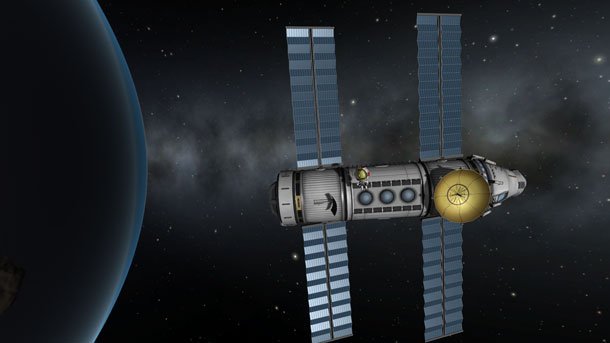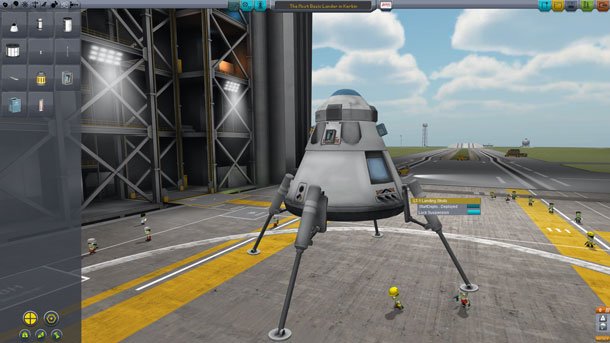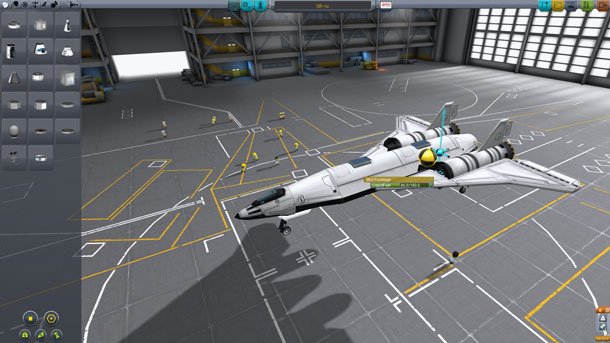Kerbal Space Program update .23 hands-on: there's science to do

Last week's big announcement of a multiplayer mode for Kerbal Space Program gave a preview of what 2014 will hold for the indie space simulator. But in the meantime, the single-player experience is getting closer and closer to feature-complete. Update .23, free for players starting on December 17, adds some much-needed groundwork for Career Mode's final new features.
Tuesday's update doesn't have quite the splash that .22 did—that update added career mode, after all—but refinements to core game mechanics point to what the game will look like when it is finally completed. Players goofing around in sandbox mode will find a lot to love in the new Tweakables menus and overhauled vehicle construction screens, while career mode aficionados will be presented with a challenging new set of rules for science and exploration.
Career mode will eventually feature contracts to fulfill and budgets to crunch under. The driving force for all of that, however, is scientific data, which unlocks new parts and systems that allow Kerbals to fly further and discover more things. Introduced in update .22, the Science system was very good at rewarding new exploration, but failed to incentivize long-term research. The result, for me at least , was that I couldn't set up Coconut Monkey Space Station as a science station with decades of planned productivity. Instead, I sent Jeb rampaging through the solar system, planting flags like a greedy sibling licking all of the dinner rolls.

Scientific expeditions to new planets used to work like this: once landed, experiments run and broadcast the data home. A percentage penalty is applied for transmitting data instead of physically bringing the ship home, but afterward the experiment can be reset and performed repeatedly. As long as the solar panels worked, all of the useful science can be gathered in one mission. With the job done, it's time to send a mission on to the next place.
In update .23, the new rule is simple: data can be transmitted exactly once. The same percentage penalty is still applied for not bringing the experiment all the way home, but then the equipment is finished until it gets reset somehow.
Enter: the Science Lab. This new module is heavy, large, and sucks through power to support its equipment and two required crew members. For all of that effort, though, scientific experiments can be reset and data processed for a full allotment of science points. Bases with a lab can fully explore and analyze their corner of the solar system by serving as a home base for exploring rovers, and orbiting science bases can reset experiments for probes shuttling back and forth to the surface.
One of my favorite new changes, the Science Archives, helps organize all of these experiments back on Kerbin. Housed inside the R&D building, the archives show all known biomes and locations for science, as well as a progress bar that shows how thoroughly a region has been explored. Players who previously focused on the outer planets will be surprised by how much there is to learn about Kerbin's many biomes closer to home.
The biggest gaming news, reviews and hardware deals
Keep up to date with the most important stories and the best deals, as picked by the PC Gamer team.

Things have changed more dramatically inside the Vehicle Assembly Building and its wing-based cousin, the Space Plane Hangar. The team has revamped the vehicle parts interface, and each part comes with an easy-to-read detail list. It's obvious at a glance which engines generate electricity while running, for example, and easy to compare weights when a hundred-ton monstrosity isn't an option.
During assembly, the new “tweakables” system opens context menus for any part to tinker with settings. On space planes, control surfaces can be tweaked to only respond to input along certain axes, resulting in more granular control and more stable flight. Engines can be installed with their gimbals turned off or restricted to a certain percentage of their total thrust. This thrust limiting is particularly handy for launching large, unbalanced loads such as space stations or philosophical tea pots . This lets you adjust the power of multiple engines across a large structure, perfectly balancing the center of thrust and avoiding catastrophic cartwheels.
If you've been holding off on trying Kerbal Space Program until it's more complete, update .23 a great time to jump in. Snag it on Steam or at the Kerbal website , and don't forget to add some mods .

